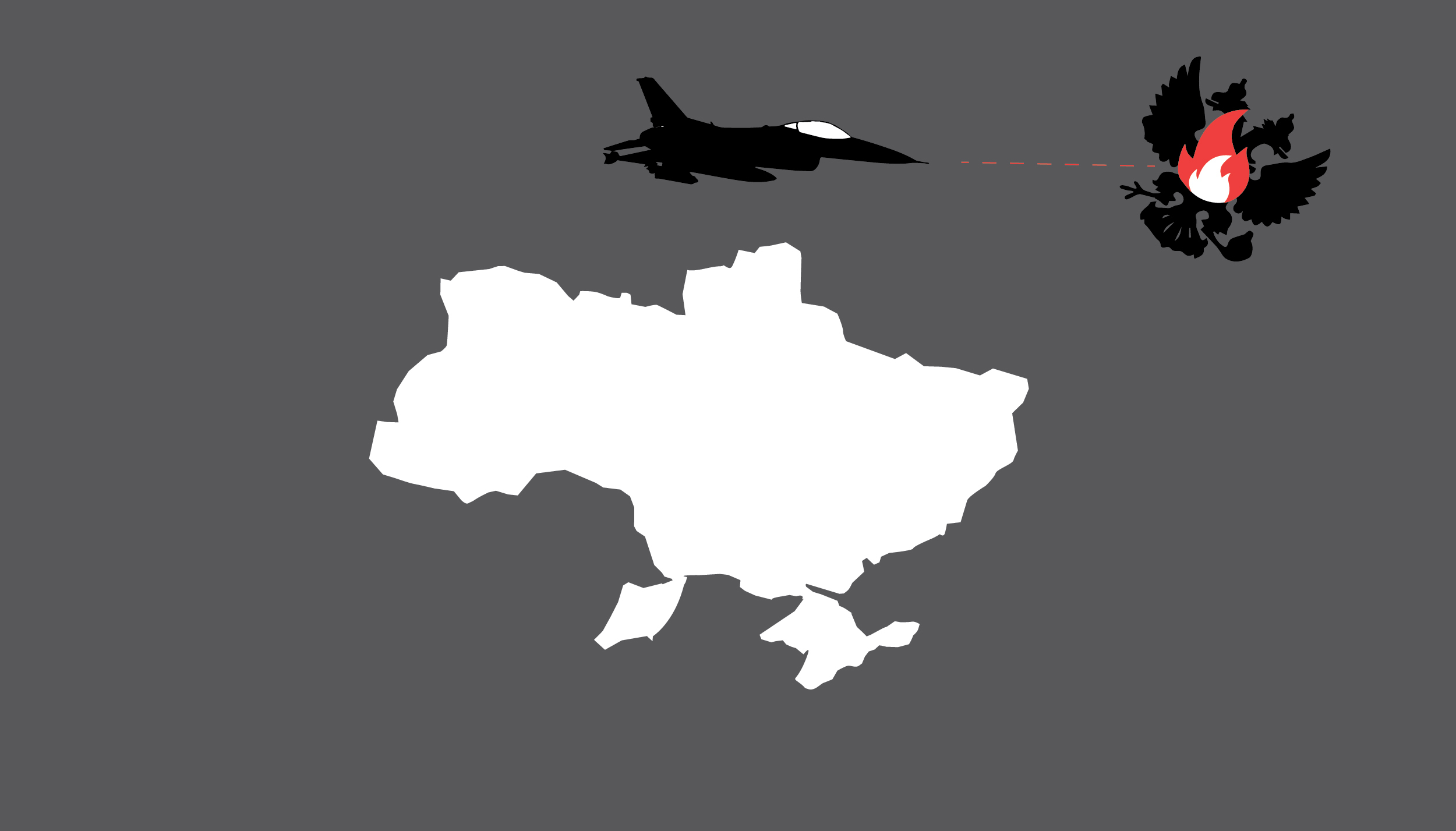

Українською читайте тут.
On the afternoon of July 31, 2024, Bloomberg reported that the first batch of F-16 fighters had arrived in Ukraine. Sources speaking on condition of anonymity indicated that late July was the target for this delivery. The Times of London, citing its own sources, specified that six planes were delivered from the Netherlands to Kyiv, with additional aircraft from Denmark expected soon. On the evening of August 31, The Telegraph noted that Ukrainian F-16s had already conducted their first combat missions, initially focusing on bolstering air defense.
During an August 31 briefing, John Kirby, a representative of the White House National Security Council, neither confirmed nor denied the transfer of the planes, redirecting inquiries to the Ukrainian authorities. He reassured that the transfer process was underway and that the fighters would be operational in Ukraine by the end of the summer as promised.
Mykhailo Podolyak, an adviser to the head of the President's Office, refrained from confirming or denying the information, emphasizing that the aviation component is a "critical survival factor" and suggesting patience for official confirmation. Meanwhile, Lithuanian Foreign Minister Gabrielus Landsbergis essentially confirmed the arrival of the F-16s on the social media platform X: "F-16 is in Ukraine. Another impossible thing turned out to be quite possible."
In the absence of official denials, it can be reasonably inferred, based on reports from several Western media outlets and a statement from the Lithuanian Foreign Minister, that F-16s are indeed in Ukraine.
The decision to supply American F-16 fighters to Ukraine was announced by President Joe Biden in May 2023, following persistent requests from Ukraine and pressure from pro-Ukraine congressmen and international allies. More than a year later, these aircraft have finally bolstered Ukraine's defense capabilities. Belgium, Denmark, the Netherlands, and Norway have committed to providing Ukraine with over 60 planes. According to Ukraine's First Deputy Defense Minister, Lieutenant General Ivan Gavrylyuk, Ukraine needs at least 130 F-16 fighters to effectively counter Russian aircraft. In spring 2024, Pentagon spokesperson Major General Patrick Ryder stated that Ukraine would be able to use the F-16s only within its sovereign territory.
Over the past year, Russia has intensified its use of aircraft in the conflict, dropping approximately 700 aerial bombs on Ukraine each week. Therefore, enhancing the Ukrainian Air Force's capabilities has become crucial for resisting aggression. While the initial supply of aircraft is limited, Bloomberg notes that over time, these deliveries should enable Kyiv to erode Russia's aerial dominance. However, veteran pilots caution that the mere presence of F-16s will not be a game-changer on the battlefield.
Nonetheless, the arrival of F-16s signifies a strengthening of Ukraine's air defense capabilities and continues the trend of integrating advanced Western military technology, including Patriot air defense systems, ATACMS ballistic missiles, Storm Shadow cruise missiles, Leopard and Abrams tanks, HIMARS MLRS, Bradley IFVs, CV-90s, and sophisticated Western artillery systems. This integration not only rhetorically but also practically aligns Ukraine with NATO in the military domain.
Analysis of Kremlin propaganda channels on Telegram reveals a range of reactions to the F-16s' arrival in Ukraine, from confident assertions that the planes will have no impact and will be swiftly destroyed, to expressions of despair that Ukraine now possesses nearly every type of Western weapon except nuclear arms.
"F-16 are about to light up at Ukrainian airfields"
In June 2022, in response to another round of U.S. military aid to Ukraine, Russian President Vladimir Putin claimed that his army was "shelling American weapons in Ukraine like nuts," attempting to downplay the significance of Western support for Kyiv and assuring that any Western weapons would be neutralized by Russian forces. This rhetoric is echoed by several so-called z-bloggers even today, asserting that the planes will be destroyed on the ground before they can take off.
"We're waiting. We expect the airfields to be pinpointed," wrote the authors of a Telegram channel with 512,000 subscribers, suggesting that local sources would soon provide the exact locations of the planes, enabling Russian strikes on their bases. Another z-blogger with an audience of 565,000 called for the immediate destruction of the "sixteenths" at the airfields to prevent a Russian-American fighter competition. "It's not necessary to find out who is superior in the air – the [Russian] Su-35S or the [American] F-16AM. We need to deprive Ukraine of this new advantage as soon as possible... By burning on the tarmacs of Ukrainian airfields, the 'sixteenths' can cool down many 'hot heads.'"
Since May, Ukraine has been using British and later French Storm Shadow long-range missiles, launched from Soviet-era Su-24 frontline bombers modified for this purpose. Ukraine has a limited number of these aircraft, roughly one squadron (according to World Air Forces 2024 and Military Balance 2024). The destruction of these aircraft, as carriers of Ukraine's long-range missiles, has been and remains a primary target for Moscow, as does the elimination of the newly arrived F-16s. Despite airfield strikes and combat losses, Su-24 aircraft continue to successfully complete their missions. Therefore, a Russian effort to target F-16s at Ukrainian airfields is to be expected, but it is unlikely to be more successful than their attempts to eliminate Su-24s. On the contrary, the advanced capabilities of the F-16s will enhance air defense, and the aircraft themselves can participate in protecting their bases, particularly against drones and cruise missiles.
"F-16s have arrived: Ukraine is preparing for a counteroffensive"
Numerous propaganda Telegram channels reported that the arrival of the fighter jets signaled the start of the Ukrainian counteroffensive. "Preparations for the autumn counteroffensive are in full swing; we should expect the first use of fighter jets at the front in August," stated a Telegram channel with an audience of one million. Another channel with over a million subscribers commented, "Zelensky insists that F-16s participate in a large-scale offensive. The Americans are hesitant because of the risk of losing several planes in the first month of combat."
These reports reflect Russian fears of Western weapons, as the belief that six planes could trigger a counteroffensive suggests an overestimation of their impact. At the same time, attempts to link the appearance of the F-16s with counteroffensive preparations are aimed primarily at the Ukrainian audience on Telegram. This implies that enemy propaganda is trying to manipulate Ukrainian expectations, fostering a belief in significant and immediate changes on the battlefield in favor of Kyiv, potentially leading to a sense of quick and easy victory. When such rapid success does not materialize in the fall (since the use of these planes has a long-term strategic effect rather than an immediate one), propagandists could then argue that the introduction of Western aircraft failed to bring about positive changes and that the counteroffensive was unsuccessful.
"Western fighters are more for PR than for victory"
At the same time, in another segment of Telegram aimed more at the Russian audience, propagandists assured that the newly arrived planes would not change the situation in favor of Ukraine. They suggested that the appearance of these jets might add symbolic points to the Ukrainian authorities but not to the Ukrainian military. An anonymous Telegram channel with 2.6 million subscribers wrote, "Bankova will once again talk about the 'victory,' and the Russian army will continue to destroy the enemy, no matter what the enemy flies." The same channel emphasized that "the Armed Forces simply do not have enough runways suitable for the F-16 – hence, the planes are extremely vulnerable to strikes by the Russian Armed Forces, and since Kyiv is not ready to lose the hard-earned equipment, it is unlikely to risk the fighter jets."
Another Telegram channel with 740,000 subscribers tried to downplay the "sensationalism" of the news, claiming that the planes arrived in Ukraine a month ago, but information about them was only now published: "Signals about the combat use of F-16s from the rear areas of Ukraine were received already a month ago. There is an old tried-and-tested scheme: NATO weapons and equipment are delivered to Ukraine, after which the West announces the fact of delivery through controlled media."
"Now Ukraine has all Western weapons. Well, except nuclear"
"Now Ukraine has all Western weapons. Well, except nuclear," read another post. Despite the limited number of aircraft received and restrictions on their use, several Telegram channels from the so-called z-segment expressed concern about the unprecedented scale of military modernization of Ukraine's weapons arsenal. They noted that Ukrainians had received Western equipment and mastered the technologies despite a lack of time. These channels repeatedly emphasize this while continuing to promote the narrative that Russia is at war not with Ukraine but with NATO.
"So, apart from nuclear weapons and a large navy, the Ukrainians have got everything the Western arsenals have. Since the war in Vietnam, we have not opposed Western military thought, technology, and intelligence on such a scale," wrote a Telegram channel with 600,000 subscribers. Another channel with 506,000 subscribers stated that the West had truly become involved in the war by giving Ukraine everything it had, with no "red lines" standing in the way: "This characterizes the level of involvement of NATO countries in the war. With the transfer of the F-16, essentially all types of equipment in the arsenals, except for nuclear weapons, appeared in the Armed Forces. And all the 'red lines' that were so fond of drawing in this regard in Moscow turned out to be crossed without any special consequences."
A channel with an audience of one million wrote that by providing the planes to Ukraine, "MI-6 increases the escalation and can take the war in Ukraine to a new level, using Moldova for this purpose," because Moldova can be used as a main base for F-16 fighter jets, "which will allow NATO countries not to become a target for Russian missiles, but to provoke the Kremlin into a harsh reaction."
Earlier, on May 6, 2024, the Russian Foreign Ministry used the topic of F-16 deliveries to Ukraine to justify nuclear blackmail of the West. At the time, sudden exercises in the preparation and use of nuclear weapons were presented as a response, among other things, to the planned transfer of aircraft. Moscow stated that it would consider any F-16 fighter jets delivered to Ukraine as carriers of nuclear weapons and would treat the corresponding delivery as a purposeful provocation. By equating the delivery of F-16s with the delivery of nuclear weapons, the threat to use nuclear means to eliminate the alleged nuclear threat posed by these aircraft to Russia was likely contextually hidden. But overall, such rhetoric was an acknowledgment of both their anxieties regarding the reinforcement of Ukraine by these fighter jets and their helplessness in preventing such reinforcement.
To gain air superiority, Ukraine will need more than one batch of fighters. The defense forces will face technical and logistical challenges. It will take time to determine how significantly the existing F-16s affect combat operations and to refine their tactics in the current Russo-Ukrainian war. However, the appearance of the F-16 in the Ukrainian sky is not only symbolic. Even if few in number, the F-16s have begun combat operations and are currently the most technologically advanced combat aircraft in Ukraine's arsenal. Their presence improves airspace security and increases Ukraine's ability to target more Russian assets. Furthermore, it promotes further integration into the Western air defense system. Lastly, it demonstrates how the West is gradually consolidating into "armed" coalitions for Ukraine. This mirrors the discussions that formed the "tank coalition" and how Western partners gradually dared to provide Ukraine with long-range missiles and eventually agreed to use their weapons on Russian territory.
The Kremlin has been adept at manipulating the West's fears of "escalation" in the Russia-NATO confrontation, often warning that providing certain types of weapons will provoke Putin's anger. However, the intimidating power of these so-called "red lines" is gradually diminishing. Ukraine's use of the first Western fighter jets serves as clear evidence of this weakening influence.


